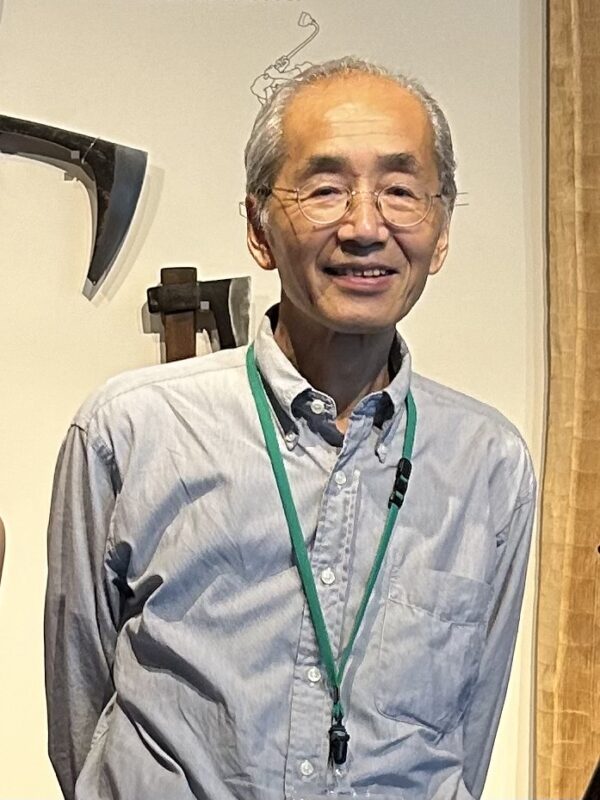
2024.08.24
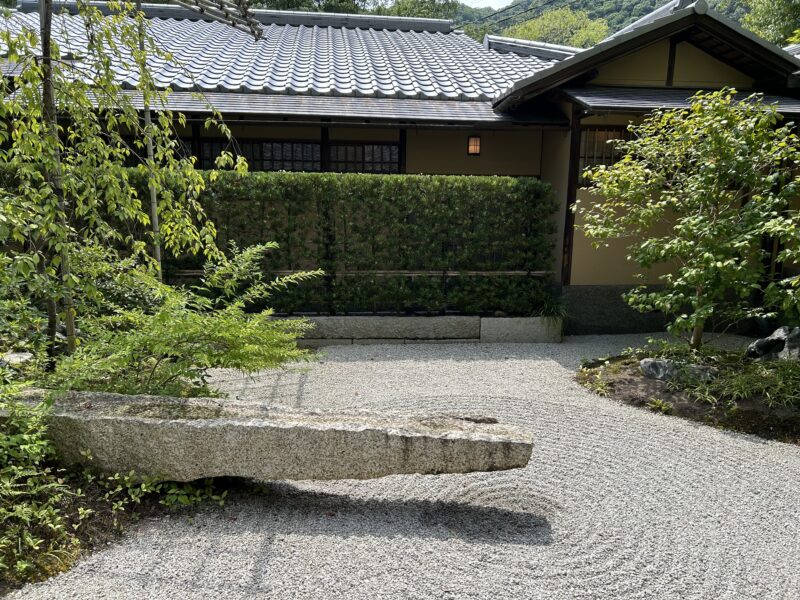
連泊される外国からのお客様の中には、日帰りで他府県に行かれる方も多くいらっしゃいます。
奈良、神戸やなんと広島までもが日帰り旅行の行先で人気なのです。
今日は、アメリカ人のお客様から教えていただいた神戸の面白い場所をご紹介します。
ほとりから電車で約1時間半の新神戸駅から徒歩5分程の場所にある竹中大工道具館です。
日本を代表する建築会社 竹中工務店が自らの歴史を振り返り、建築技術、
大工道具や職人さんの技にスポットライトを当てた博物館です。
元々は社長宅、その後会社の療養所になり、その後道具館へと変わったそうです。

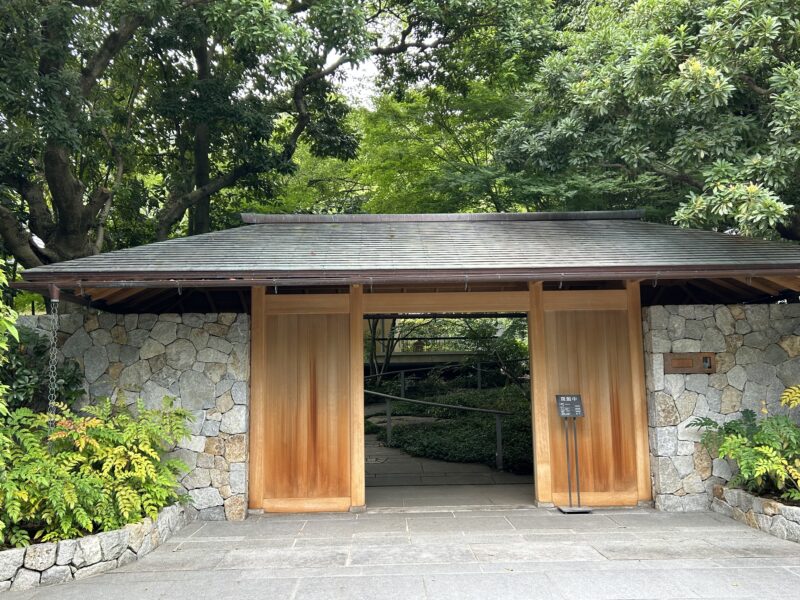
まるで大豪邸や高級料亭を思わせる大きな門をくぐると、
森の中にいるような落ち着いた緑に囲まれたガラス張りの大きな一軒家の様な建物が目に入ります。
地上1階、地下2階の建物なので、圧迫感がなくとても広々と感じられました。
ドア、壁、天井、階段、施設内のあらゆる角度に惜しみなく匠の技が施されています。
入場してロッカーに荷物を入れて、身軽に館内を楽しみます。
1階のロビーには様々な作家さん達の椅子が並んでいるので、
どれが座り心地が良いか気に入った椅子全部に座ってみました。
10時から、ボランティアガイドさんの館内ツアーがあるとの放送が流れ参加してみることにしました。
お世話になったのは、設計士の経歴をお持ちの川本様。
スタート地点1階ロビーの天井は、天然の無垢材を使った伝統の舟底天井。
外に目を向けると六甲の山並みを借景とした中庭があり、庭の中心には祠がありました。
そこを動かすことなくこの道具館を設計されたとのこと。
日本の大きな会社や長く続く会社の経営者は、神様を大切にするという日本らしさを感じました。
階段を降り、地下に向かいますが、吊るすスタイルの階段、地下2階まで明るさが届くデザイン、
漆喰の壁など匠の技ポイントが沢山すぎる程ありました。
一緒に行ったスタッフも興味津々で沢山質問をしながら進み、
最初の道具の展示場所に辿り着くまでなんと30分以上かかりました。
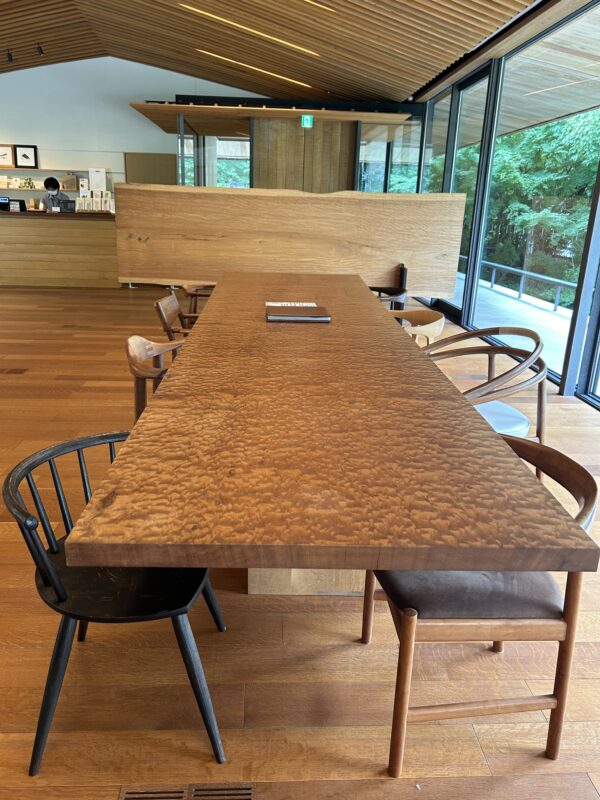

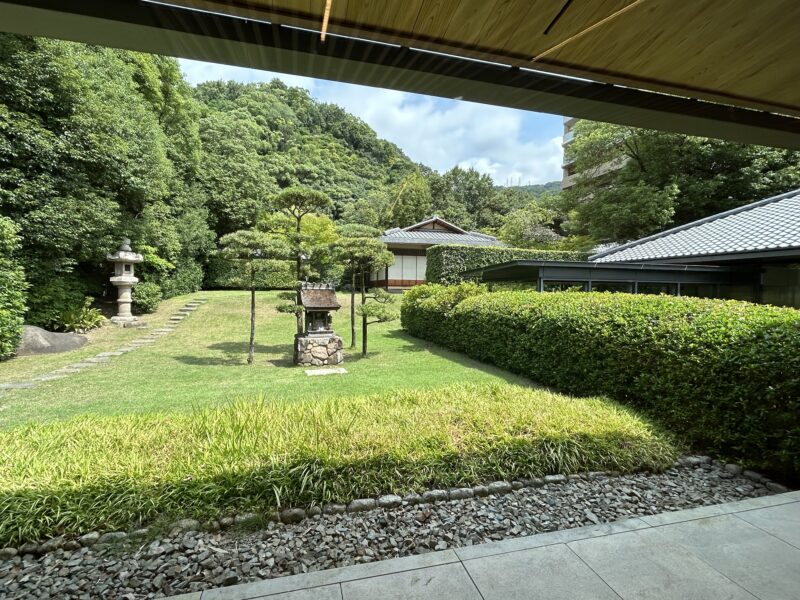
道具と手仕事のコーナーには木と木を組むのにくぎを使わずどのように組むかを
模型で展示されています。継手仕口(つぎてしくち)と呼び、
大工さんの腕自慢の遊び心を見る事ができる凝ったまるで木のパズルの様なものです。
模型が沢山展示してあり「どうやって解体するのか?」と
子供から大人まで一生懸命に格闘していました。
その日の温度度や湿度でも外れやすさが変わってくるそうです。
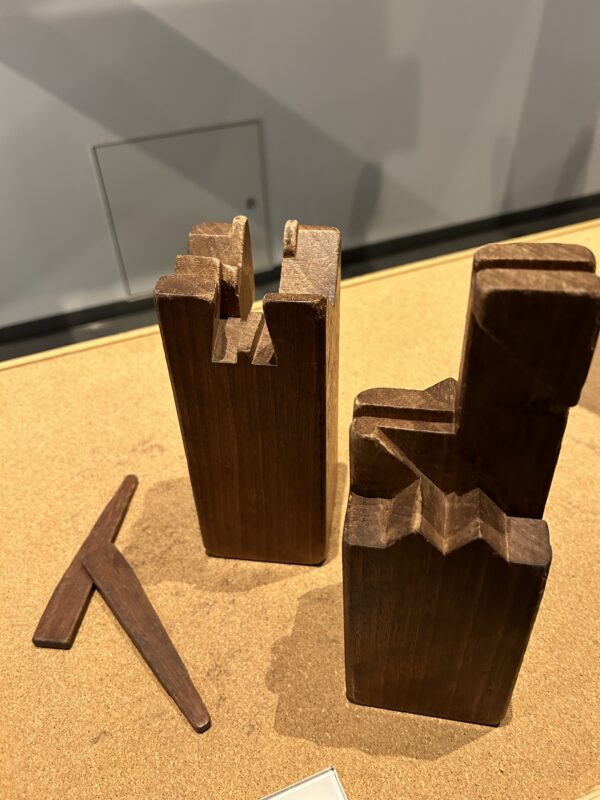
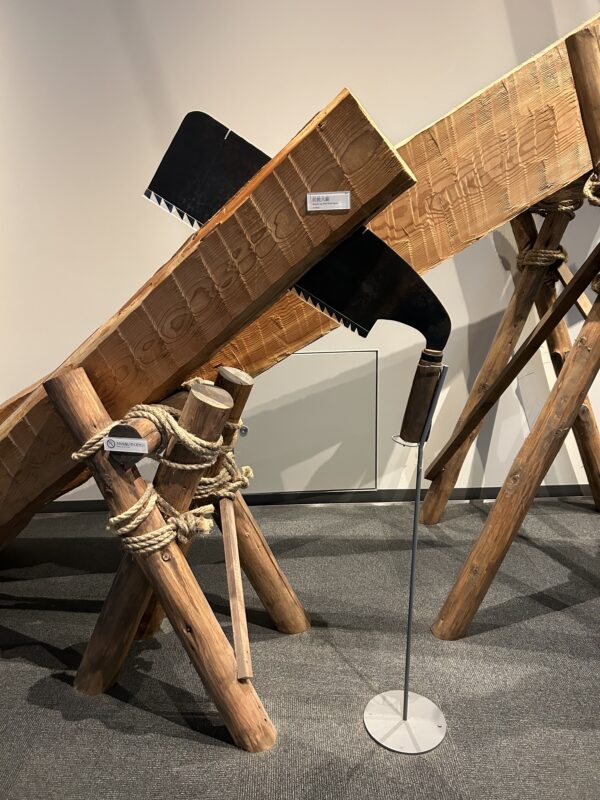

約1千点の大工道具、7メートルを超える唐招提寺金堂の柱と組み物、
数寄屋の繊細な組子細工の美しいスケルトン茶室など、見る物すべてが見事な職人技で、
日本の職人さんへの尊敬の気持ちが溢れてきました。
建物そのもの、道具館の空間、大工道具の歴史、など沢山の展示を見ましたが、
宮大工の棟梁の言葉もとても印象的でした。




展示に自然と惹きこまれ楽しい道具館でした。
建物の成り立ちから、石器時代の道具から、現代にいたるまでの大工道具、
宮大工小川三夫棟梁が制作された法隆寺五重塔の模型にまつわる話、どれも面白かったです。
通常1時間半~2時間ほどのツアーだそうですが、川本様のガイドがとても面白くとても勉強になり、
1時間半では見終わらなかった為、ランチを挟んで午後からもツアーに参加することにしました。
奥深い道具の世界を更に奥深く学ぶ事が出来ました。(川本様ありがとうございました!)
お時間がたっぷりとれる方は、是非ガイドツアーにもご参加されてはいかがでしょうか。
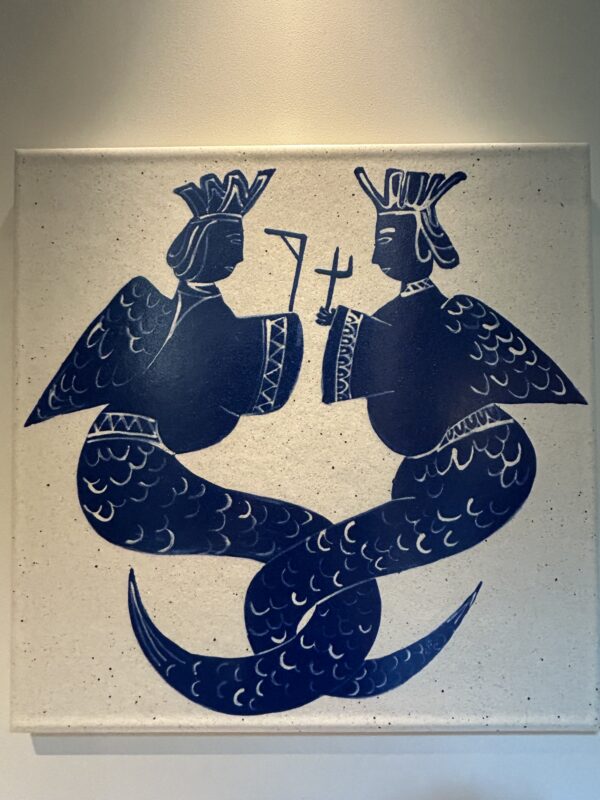
Many of our international guests who stay with us for consecutive nights take day trips to other prefectures. Nara, Kobe and even Hiroshima are popular day trip destinations.
Today, I would like to introduce an interesting place in Kobe that an American guests taught us about.
It is the Takenaka Carpentry Tools Museum, a five-minute walk from Shin-Kobe Station, about an hour and a half train ride from hotori.
The museum is a retrospective of the history of Takenaka Corporation, one of Japan’s leading construction companies, and spotlights construction techniques, carpentry tools, and craftsmanship. The museum was originally the president’s residence, then became a company sanatorium, and was later transformed into the Takenaka Carpentry Tools Museum.
Passing through a large gate reminiscent of a grand mansion or a high-class restaurant, I saw a large, glass-walled house-like building surrounded by serene greenery, as if I were in a forest. The building has one floor above ground and two below, so it feels very spacious and not oppressive. The doors, walls, ceilings, staircases, and every angle of the facility is lavishly decorated with artisan craftsmanship.
At 10:00 a.m., a volunteer guide gave us a tour of the museum, which we decided to participate in. The tour guide was Mr. Kawamoto, who has a background as an architect. He gave us a very wide-ranging explanation of the building, the tools on display, the techniques of the shrine carpenters, and the craftsmen who made the tools.
The ceiling of the lobby on the first floor of the starting point is a traditional boat-bottom ceiling made of natural solid wood. Looking outside, there was a courtyard with a borrowed view of the Rokko mountains and a shrine in the center of the garden. This museum was designed without moving it there. I felt the Japanese way of thinking that the corporate managers of large and long-lasting companies in Japan cherish gods.
Going down the stairs to the basement, there were too many points of craftsmanship, such as a hanging staircase, a design that allows light to reach the second basement floor, and plaster walls. It took us more than 30 minutes to get to the first display of tools.
It was interesting to learn about carpentry tools from the Stone Age to the present day, as well as the story behind the model of the five-story pagoda of Horyuji Temple made by master carpenter Mitsuo Ogawa.
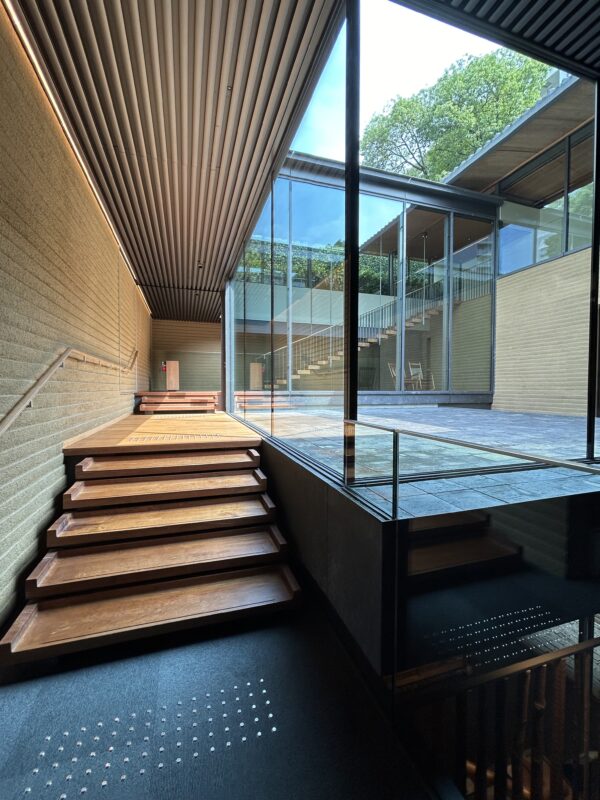
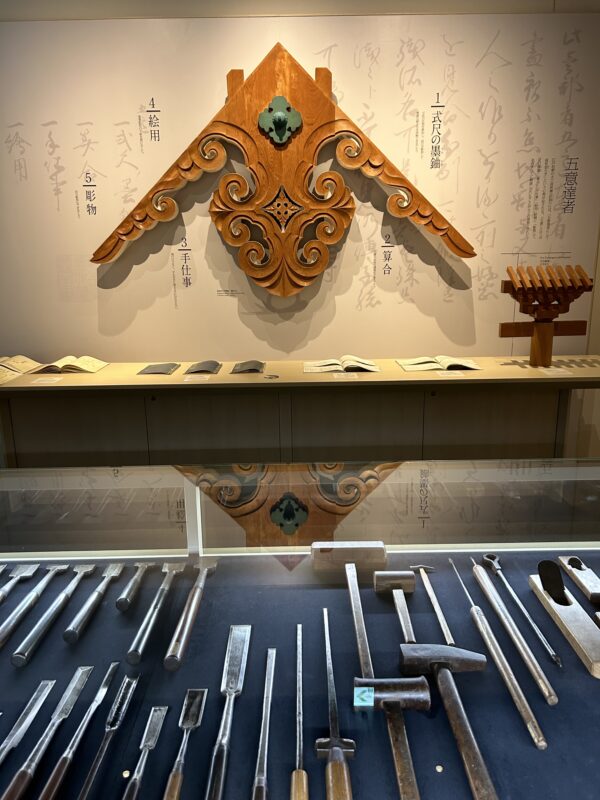
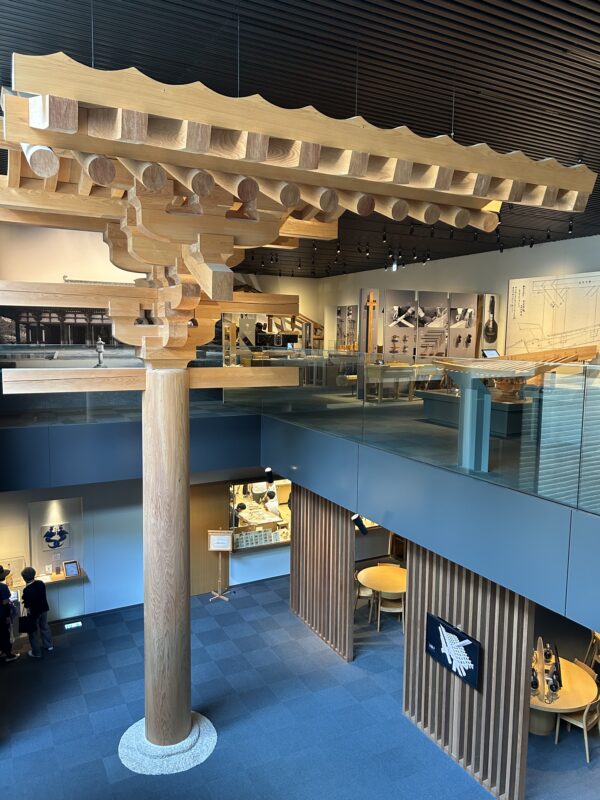
In the “Tools and Work” section, a model of how wood is joined together without using nails is displayed. It is called “Tsugite-shikuchi,” which is like an elaborate wooden puzzle that allows visitors to see the playful spirit of a carpenters’ pride in their skills. There are many models on display, and everyone from children to adults were struggling to find out how to dismantle them. The ease of disassembly depends on the temperature and humidity of the day.
The tour usually takes about one and a half to two hours, but Mr. Kawamoto’s guide was so interesting and informative that we decided to join the tour again in the afternoon after lunch because we could not finish the tour in one and a half hours.
Everything we saw, including about 1,000 carpentry tools, the pillars and braid of the Golden Hall of Toshodaiji Temple (over 7 meters high), and the beautiful skeleton tea room with delicate braid work in the sukiya style, was of superb craftsmanship and filled me with respect for Japanese craftspeople.
I saw many exhibits, including the building itself, the space of the tool museum, and the history of carpentry tools, but I was also very impressed by the words of a master of shrine carpenter.
Tools are Extensions of the Hand
The right Wood for the job
I was naturally drawn to the exhibits and enjoyed the Museum. By participating in the guided tour, we were able to learn even more about the profound world of tools. If you have a lot of time, why not join the guided tour?
Mikko


